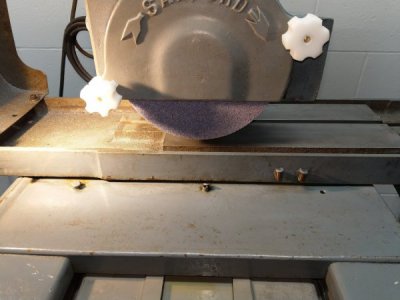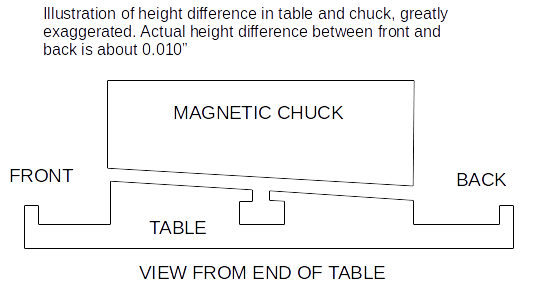- Joined
- Jan 3, 2013
- Messages
- 192
Interesting problem(s):
Doing some test setup today in preparation for a possible table grind. I set up an indication on the spindle to see what the table looks like before grinding. Measuring from left to right, I got a deflection of about 0.001 (one thou). Measuring from back to front, with the back set to zero, I got an indicator rise of 0.010 (ten thou). Those seem like awfully big numbers for a surface grinder.
Then, I installed a new 7" wheel. But with the spindle lowered as far as it will go, the wheel is still about 3/4" above the table! Not going to do much table grinding with that. (see picture)
So - what do the experts advise?

Doing some test setup today in preparation for a possible table grind. I set up an indication on the spindle to see what the table looks like before grinding. Measuring from left to right, I got a deflection of about 0.001 (one thou). Measuring from back to front, with the back set to zero, I got an indicator rise of 0.010 (ten thou). Those seem like awfully big numbers for a surface grinder.
Then, I installed a new 7" wheel. But with the spindle lowered as far as it will go, the wheel is still about 3/4" above the table! Not going to do much table grinding with that. (see picture)
So - what do the experts advise?
- Remove the guard and install an oversize wheel just to grind the table?
- Leave well enough alone and just grind in the magnet?
- Other?



